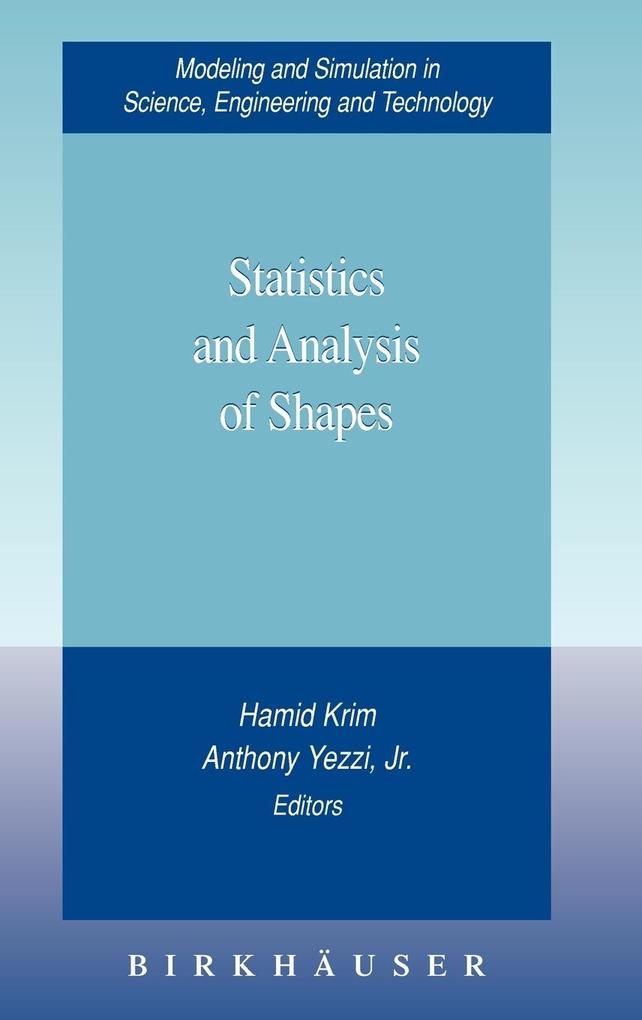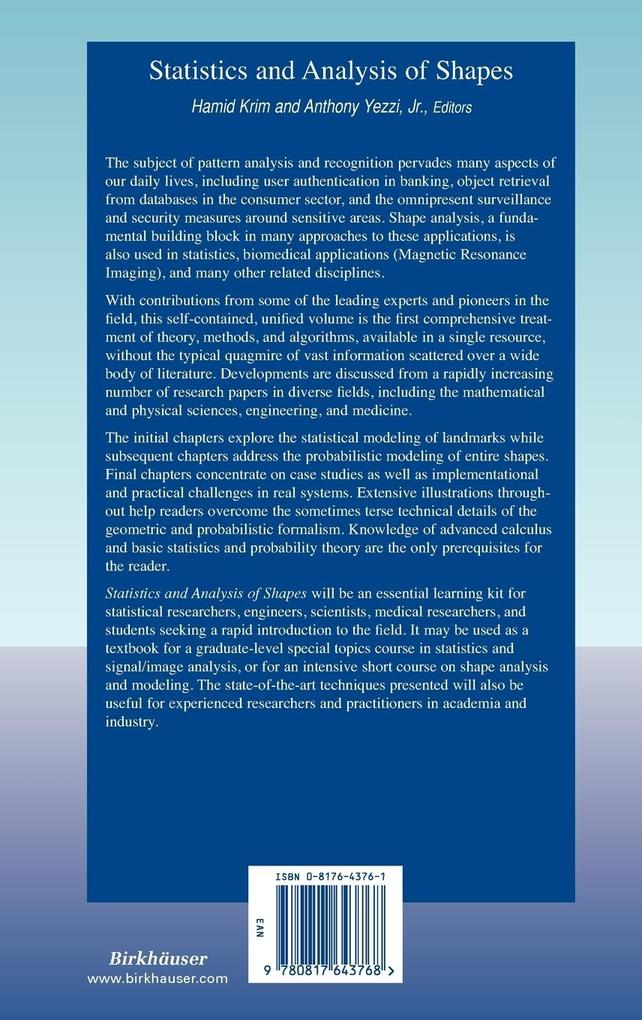Shapes have been among man's fascinations from thestoneage to thespace age. The scienti? c study of shapes may indeed be traced back to D'Arcy Thompson in his pioneering book On Growth and Form where shape was shown to be dependent on functionality [6]. Numerous de? nitions of a notion of a shape have been proposed in the past, each and every one highlighting aspects relevant to a particular application of interest. The advent of digital imagery, together with the ubiquitous exploitation of its characteristics in a variety of applications, have triggered a renewed and keen interest in further re? ning and possibly unifying the notion ofshape. The present contributed book is, to a large extent, motivated by this upsurge in activity and by the need for an update on recent accomplishments and trends. Theresearchactivityinshapeanalysisisdistinguishedbytwomainschools of thought: - The? rstapproximatesshapesbya? nite-dimensionalrepresentation(a set of landmarks), which is then subjected to various transformations to account for variability and to subsequently derive models. - The second, on the other hand, interprets shapes as closed contours in an in? nite-dimensional space, which, when subjected to transformations, morph into other shapes, thereby yielding a notion of similarity in the space of shapes. 1 Landmark-BasedShapeRepresentation Shapeisaboutscale, orientation, andrelationshipamongtheso-calledchar- teristic points/landmarks of an object-delineating contour. Such information about a data set better de? nes a shape. Equivalently, when such information is taken out of two data sets, the resulting shapes may be compared.
Inhaltsverzeichnis
Medial Axis Computation and Evolution. - Shape Variation of Medial Axis Representations via Principal Geodesic Analysis on Symmetric Spaces. - 2D Shape Modeling using Skeletal Graphs in a Morse Theoretic Framework. - Matching with Shape Contexts. - Shape Recognition Based on an a Contrario Methodology. - Integral Invariants and Shape Matching. - On the Representation of Shapes Using Implicit Functions. - Computing with Point Cloud Data. - Determining Intrinsic Dimension and Entropy of High-Dimensional Shape Spaces. - Object-Image Metrics for Generalized Weak Perspective Projection. - Wulff Shapes at Zero Temperature for Some Models Used in Image Processing. - Curve Shortening and Interacting Particle Systems. - Riemannian Structures on Shape Spaces: A Framework for Statistical Inferences. - Modeling Planar Shape Variation via Hamiltonian Flows of Curves. - Approximations of Shape Metrics and Application to Shape Warping and Empirical Shape Statistics.














